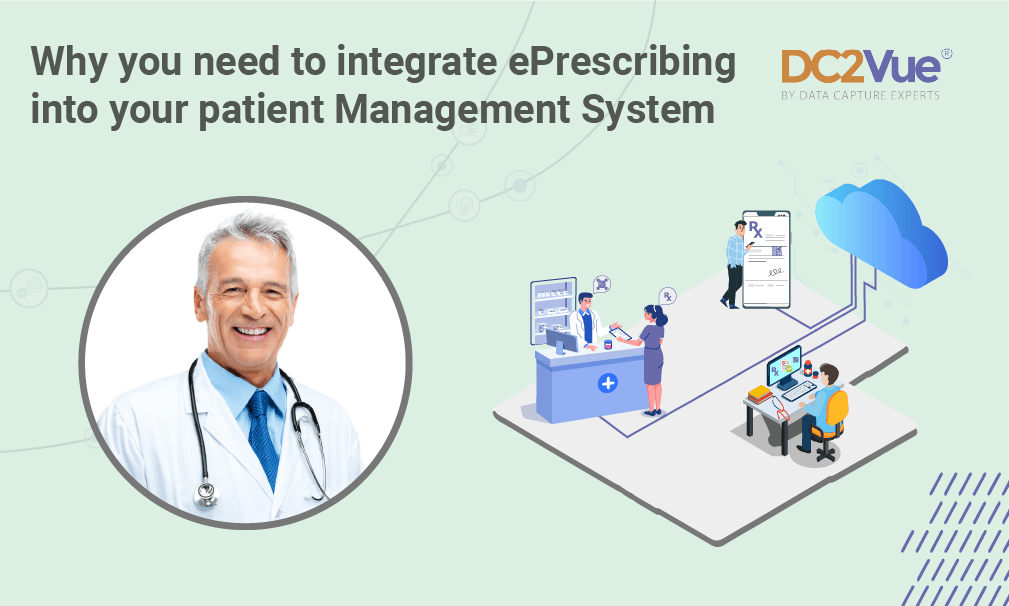Given the benefits, ePrescribing should be the default method for prescribing medicines. However, significant legal, patient privacy, and provider barriers impeded implementation historically.
Fortunately, integrating ePrescribing into your patient management system is a convenient solution. Providers can reduce risks while meeting patient needs at the same time
A Definition Of ePrescribing And The Benefits It Offers
Doctors traditionally write prescriptions on bits of paper, hand them to patients and then ask them to go to the pharmacy to collect their medications. It is a functional system, but there are problems. These include:
Pharmacists being unable to read the contents of the description accurately because of illegible handwriting.
Patients having to wait in the pharmacy for pharmacists to formulate their medicine
Patients losing their prescriptions or handing them to the pharmacy team damaged
However, these issues disappear with ePrescribing. Physicians send prescriptions to the pharmacy electronically in a legible format, eliminating the risk of information loss and improving the patient experience. Benefits of implementations of this kind include:
Encouraging patients to attend the pharmacy by increasing the speed of service.
Negating the need for patients to hand physical pieces of paper to pharmacists.
Improving the role of the pharmacist as a middle-man between patients and their physicians, giving them full knowledge of the patient’s conditions and symptoms.
Cutting down on paperwork and reducing health system costs
Reducing the need for patients to hang onto easily lost and damaged physical prescriptions long-term.
Cutting down on paperwork, filing and administration costs of the pharmacists
Providing pharmacists with a 360-degree view of a patient’s medication, improving safetyThe Benefits Of Integrating ePrescribing Into Patients Management Systems
The Benefits Of Integrating ePrescribing Into Patients Management Systems
The technology to facilitate ePrescribing has been around for at least two decades and probably longer. However, clinicians and health systems felt unable to implement it due to various patient privacy and feasibility barriers. ePrescribing did not fit into a broader technology ecosystem.
Today, though, the situation is different. Providers can now incorporate ePrescribing modalities into electronic healthcare record systems in the outpatient setting. Centralised software repositories act as central storage areas letting healthcare practitioners access all patient information in one place. These facilities make it easy for providers to see patients’ histories, previous diagnoses, and medication information. We list some of the benefits below:
Reduces The Risk Of Error
Integrated ePrescribing setups are critical because they reduce the risk of error. Clinicians can make holistic appraisals of patients’ situations based on all the available information. There are no data silos cut off from each other, as there are under the traditional paper-based setup.
Patient management systems also facilitate streamlined, secure and automated patient data access. All care team members can see the same information, letting them offer a higher standard of care.
In turn, this approach enhances the patient experience. Patients don’t have to repeat themselves to practitioners or continually hand them prescriptions. All the information clinicians need is available via their data portals.
Improves Safety
There are also significant safety benefits, too. For instance, patients can change doctors more fluidly without the risk of being prescribed the wrong medications. New physicians can easily view patients’ prescription history, how much medicine their old healthcare provider gave them, and when. They can then adjust new prescriptions to fit their record, maintaining safety and best practice throughout the process.
Reduces The Administrative Burden
Integrating ePrescribing into a patient management system also reduces practitioners’ administrative burden. In separate, non-cloud-based systems, doctors must manually create prescriptions, send them electronically to pharmacies, and input data into management software.
However, with integration, this labour requirement vanishes. The patient management system takes care of this task, freeing practitioners to do frontline work.
Patient management systems with integrated ePrescribing also reduce the burden for healthcare system administrations. Holding all patient data in one location eliminates the need for further processing or transferring information across teams and clinics. Servers maintain all prescription information, providing a point of reference for clinicians at any location.
How To Benefit From Patient Management Systems with ePrescribing
Regulators in Australia facilitate e-prescriptions by applying the same regulations as paper-based ones. Clinicians must adhere to the National Health Act, as it applies in their territory when prescribing.
However, similarly amenable regulations also exist in the U.S. Here, the growth of ePrescribing took off after the introduction of the Medicare Prescription Drug, Improvement, and Modernization Act (MMA) of 2003. E-prescription drugs fell under the coverage of Medicare by 2006 following this legislation. The HITECH Act accelerated this process. It ensured that practitioners across the United States would have access to electronic health records technology (which usually came packaged in patient management systems).
Fortunately, integrating ePrescribing into your patient management system is easier than you might think. Software like ours already comes with ePrescribing modules built directly into the functionality. Therefore, clinics don’t have to pay professionals to integrate separately. Practitioners get access to separate scheduling, rostering, intake and referral management, billing, claiming and reporting in a single platform. With DC2Vue, teams can also access virtual care to collaborate with other team members, track activities, and keep patients in the loop. Dashboards help you keep track of vital, up-to-the-minute information, enabling data-driven insights.
Conclusion
ePrescribing is a modern solution to an old problem. It improves the situation for patients and health care systems significantly. However, it is not perfect. ePrescribing that does not integrate with the rest of patients’ data is potentially hazardous. Physicians and pharmacists could potentially dispense the wrong type or amount of drugs, based on a patient’s history. And it remains administratively burdensome. Physicians must manually share patient prescription information with their teams.
Integration of e-prescriptions with patient management systems eliminates these issues. Cloud-based platforms with e-prescribing modules, such as DC2Vue, enable teams to share information frictionlessly.



